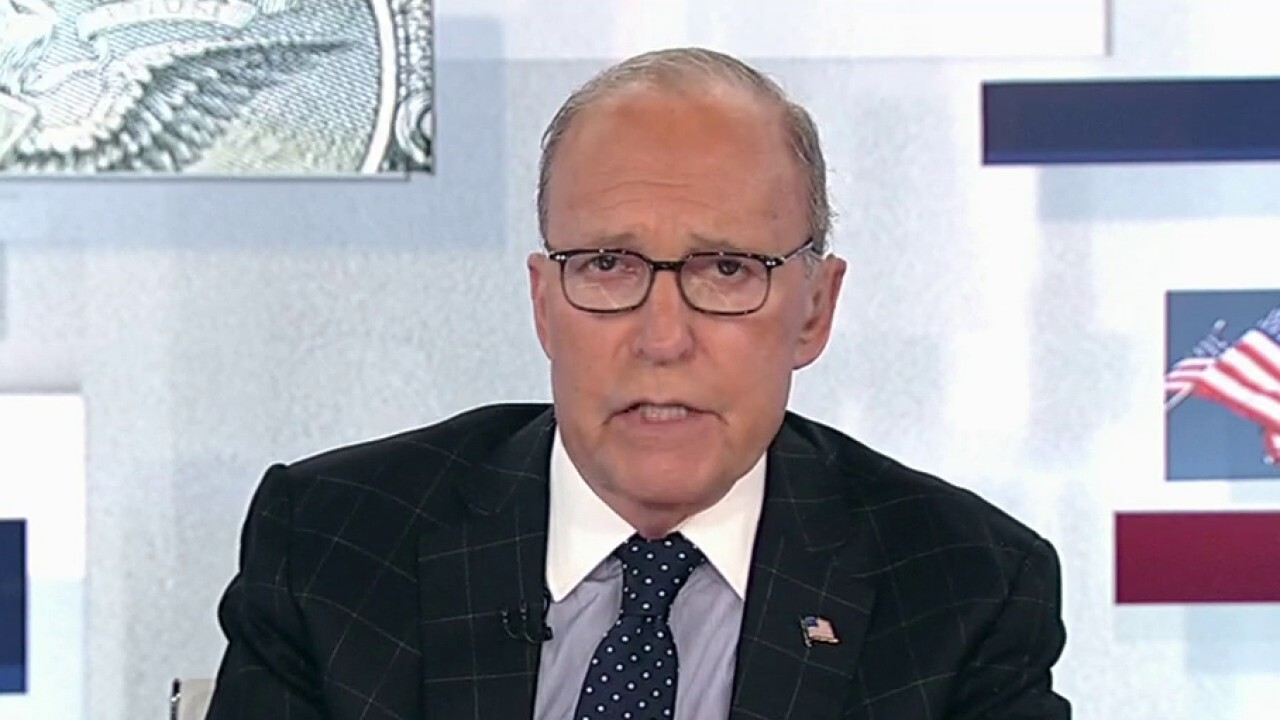Analyzing The Biden Presidency: Its Impact On The US Economy

Table of Contents
The soaring inflation rates of 2021 and 2022 served as a stark backdrop to President Biden's first term, immediately placing his economic policies under intense scrutiny. This article aims to analyze the Biden presidency's impact on the US economy, examining its key policy initiatives, their effects on major economic indicators, and the resulting challenges and criticisms. We will explore the long-term outlook and consider both the successes and failures of the administration's economic approach.
Biden's Economic Policies and Their Intended Goals
The Biden administration's economic philosophy centers on a renewed focus on infrastructure development, expanded social programs, and aggressive action to combat climate change. This approach contrasts with some previous administrations' emphasis on deregulation and tax cuts. Key policy initiatives driving this agenda include:
-
American Rescue Plan (ARP): This massive stimulus package, enacted in March 2021, aimed to provide COVID-19 relief and boost the struggling economy. While it delivered much-needed aid to individuals and businesses, critics argue its scale contributed to inflationary pressures. The ARP's impact on GDP growth remains a subject of ongoing debate among economists, with some attributing a portion of the initial recovery to its provisions.
-
Infrastructure Investment and Jobs Act (IIJA): Signed into law in November 2021, the IIJA allocates significant funding towards upgrading America's infrastructure – roads, bridges, public transit, broadband internet, and the electric grid. Proponents argue this investment will yield long-term economic benefits through job creation, increased productivity, and improved infrastructure efficiency, ultimately fostering economic growth.
-
Inflation Reduction Act (IRA): This landmark legislation, passed in August 2022, focuses on tackling climate change and lowering healthcare costs, with provisions designed to reduce the federal deficit and combat inflation. The IRA's impact on inflation is still being evaluated, with its effectiveness a matter of ongoing discussion and analysis.
Beyond these major initiatives, the Biden administration implemented various tax policies and regulatory changes, aiming to stimulate economic growth and address income inequality, impacting everything from corporate tax rates to clean energy incentives. The success of these interwoven policies in achieving their stated goals remains a subject of ongoing evaluation.
Assessment of Economic Indicators Under Biden's Presidency
Evaluating the Biden presidency's economic impact requires analyzing key economic indicators. Data from reputable sources like the Bureau of Economic Analysis (BEA) and the Bureau of Labor Statistics (BLS) are crucial for this assessment:
-
GDP Growth: While the US economy experienced significant growth following the pandemic's initial downturn, the rate of growth under Biden has varied, with factors like inflation and supply chain disruptions impacting overall performance. Further analysis is necessary to determine if this growth is sustainable and outperforms previous periods.
-
Inflation Rate: Inflation surged during Biden's presidency, reaching levels not seen in decades. This increase is attributed to a combination of factors, including supply chain bottlenecks, increased demand, and the stimulus measures implemented during the pandemic. The government's response involved measures designed to ease supply chain issues and moderate demand-pull inflation, although their effectiveness is a topic of ongoing debate.
-
Unemployment Rate: The unemployment rate has generally remained low during Biden's presidency, although pockets of higher unemployment exist within specific demographics. This positive trend has been touted as a success for the administration's economic policies.
-
Wage Growth: While wages have seen some growth, it has often lagged behind inflation, leading to a decrease in real wages for many Americans. This has become a significant point of concern and criticism.
Charts and graphs illustrating these economic indicators, sourced from the BEA and BLS, would provide a more complete visual representation of the economic trends under President Biden’s leadership.
Challenges and Criticisms of Biden's Economic Approach
Despite positive indicators like a low unemployment rate, the Biden administration's economic policies have faced considerable criticism:
-
Inflation: The surge in inflation has been a major point of contention, with critics arguing that excessive government spending contributed significantly to rising prices. The administration, however, points to global factors and supply chain disruptions as primary drivers.
-
Supply Chain Issues: Disruptions to global supply chains have exacerbated inflationary pressures and hampered economic growth. The administration's response has involved working to improve logistics and reduce reliance on foreign suppliers.
-
Debt Concerns: The national debt has increased under Biden's presidency, fueling concerns about the long-term fiscal sustainability of the country. Supporters argue that the investments made are necessary for long-term growth, while critics emphasize the need for fiscal responsibility.
Long-Term Economic Outlook Under the Biden Administration
Predicting the long-term economic consequences of Biden's policies is challenging. However, several factors will play a significant role:
- The effectiveness of the IIJA in modernizing infrastructure and boosting long-term productivity.
- The success of the IRA in combating climate change and reducing healthcare costs.
- The impact of ongoing geopolitical instability and potential future economic shocks.
- The sustainability of current economic growth rates in the face of inflationary pressures.
The long-term economic trajectory under the Biden administration will depend on the interplay of these factors and the ability of the administration to effectively address emerging challenges.
Conclusion: Summarizing the Impact of the Biden Presidency on the US Economy
The Biden presidency's impact on the US economy is complex and multifaceted. While the administration has overseen periods of strong job growth and low unemployment, the surge in inflation has overshadowed these successes for many Americans. The long-term consequences of its key policy initiatives – the ARP, IIJA, and IRA – remain to be seen. A balanced assessment necessitates acknowledging both the positive aspects of job creation and economic growth alongside the negative impacts of inflation and rising national debt. Further research into the specific economic impacts of each policy, coupled with analysis of international economic trends, is crucial for a comprehensive understanding. Continue your exploration of the Biden presidency’s impact on the US economy by researching further into specific policy areas. Understanding the complexities of this relationship is crucial for informed civic engagement.

Featured Posts
-
 Renowned Dallas Star Dies At The Age Of 100
May 02, 2025
Renowned Dallas Star Dies At The Age Of 100
May 02, 2025 -
 The Radio 4 Mystery Why Robinson And Barnett No Longer Present Together
May 02, 2025
The Radio 4 Mystery Why Robinson And Barnett No Longer Present Together
May 02, 2025 -
 Is Doctor Who Taking A Break Russell T Davies Statements Analyzed
May 02, 2025
Is Doctor Who Taking A Break Russell T Davies Statements Analyzed
May 02, 2025 -
 Veteran Actress Priscilla Pointer Dead At 100 A Legacy Remembered
May 02, 2025
Veteran Actress Priscilla Pointer Dead At 100 A Legacy Remembered
May 02, 2025 -
 The Dragons Den Effect How The Show Impacts Businesses
May 02, 2025
The Dragons Den Effect How The Show Impacts Businesses
May 02, 2025
Latest Posts
-
 Souness Explains The Crucial Error That Cost Arsenal The Championship
May 03, 2025
Souness Explains The Crucial Error That Cost Arsenal The Championship
May 03, 2025 -
 Arsenals Title Failure Souness Pinpoints The Culprit
May 03, 2025
Arsenals Title Failure Souness Pinpoints The Culprit
May 03, 2025 -
 Abrz 30 Shkhsyt Mthyrt Llanqsam Fy Ealm Krt Alqdm Ray Aljmahyr Mwqe Bkra
May 03, 2025
Abrz 30 Shkhsyt Mthyrt Llanqsam Fy Ealm Krt Alqdm Ray Aljmahyr Mwqe Bkra
May 03, 2025 -
 Souness Warns Arsenal Of Unbeatable Champions League Rival
May 03, 2025
Souness Warns Arsenal Of Unbeatable Champions League Rival
May 03, 2025 -
 Sky Bet Every Minute Matters Barrow Afc Fans Cycling Challenge
May 03, 2025
Sky Bet Every Minute Matters Barrow Afc Fans Cycling Challenge
May 03, 2025
